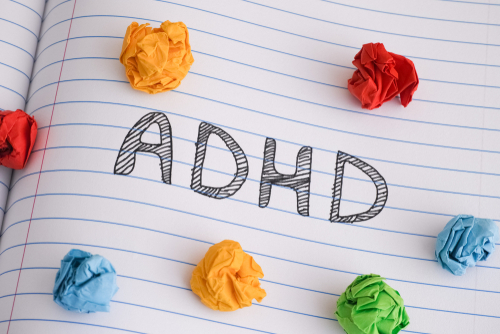Attention deficit hyperactivity disorder (ADHD), previously referred to as attention deficit disorder (ADD), is listed in the Diagnostic and Statistical Manual of Mental Disorders, Fifth Edition (DSM-5) as a chronic, neurological disorder. It is characterized by impulsiveness, hyperactivity, and attention difficulties. Attention deficit hyperactivity disorder is extremely common. The Centers for Disease Control and Prevention (CDC) estimates nearly 3.3 million children between ages 12-17 have been diagnosed with ADHD. The symptoms associated with ADHD that are experienced by an individual will interfere with his or her ability to function optimally in his or her daily life.
Signs and Symptoms
The signs and symptoms that can present in a young person with ADHD can manifest in a person as young as five years old. Symptoms will often range in severity and can differ depending on one’s gender. The Mayo Clinic provides the following examples of some of the common symptoms that an individual with ADHD could exhibit:
- Inattention to detail
- Unable to engage in activities that require prolonged attention
- Failure to meet deadlines (e.g. does not complete homework on time)
- Mind constantly wandering/ does not listen when directly spoken to
- Organizational difficulties
- Misplaces belongings frequently
- Easily distractible
- Excessive talking
- Regularly and mindlessly fidgeting
- Restlessness
- Little or no patience
A person who is diagnosed with ADHD will exhibit at least five of the above symptoms, lasting for a minimum of six months long or longer, and present in multiple settings. The diagnosis process for ADHD is rather complicated, as there is no single test for diagnosis, and symptoms will vary from person to person.
Treatment
In order to secure the most effective treatment an individual must obtain an accurate diagnosis. Therefore, it is essential for an individual that may be struggling with ADHD to undergo a thorough diagnostic evaluation by a qualified mental health professional. Every person is different and each individual will require a customized treatment plan to ensure one’s nuanced needs are accommodated. Depending on one’s needs, certain medications as well as a variety of therapeutic treatment options that could be integrated into one’s treatment plan. Some examples of common therapeutic methods used in ADHD treatment plans include talk therapy, cognitive behavioral therapy (CBT), dialectical behavior therapy (DBT), and expressive arts therapies. Cognitive behavioral therapy helps an individual identify and acknowledge his or her unhealthy thought processes, which had led to the development of harmful behavioral patterns. After which, he or she will learn to replace the unhealthy thought processes with healthy ones, subsequently resulting in healthier behaviors. DBT is a therapeutic modality that is based on the CBT approach. It places greater emphasis on the psychosocial aspect of treatment. Through DBT an individual will learn mindfulness-based skills to gain control over his or her emotions. This allows for healthier relationships and improved interpersonal skills. Expressive arts therapies are helpful for a person with ADHD, as through engaging in various art activities, a person is able to work through emotional challenges and learn to manage the symptoms that accompany ADHD. With proper treatment, an individual with ADHD can learn how to effectively manage its associated symptoms and go on to lead a healthy and fulfilling life.
Disclaimer:
The information above is provided for the use of informational purposes only. The above content is not to be substituted for professional advice, diagnosis, or treatment, as in no way is it intended as an attempt to practice medicine, give specific medical advice, including, without limitation, advice concerning the topic of mental health. As such, please do not use any material provided above as a means to disregard professional advice or delay seeking treatment.


